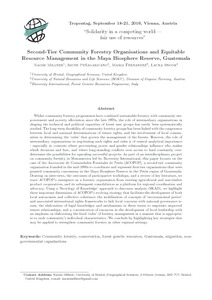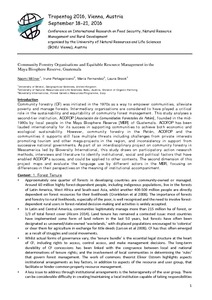Self-governance and forest resources
Forest resources share attributes with many other resource systems that make difficult their governance and management in a sustainable, efficient and equitable manner. Destruction or degradation of forest resources is most likely to occur in open-access forests where those involved, or external authorities, have not established effective governance. Conventional theories applied to forest resources presumed that forest users themselves were incapable of organizing to overcome the temptations to overharvest.



